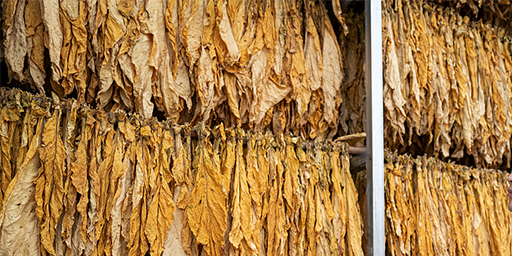Drying in stages to improve the overall quality of tobacco leaves and the proportion of middle-to-high-quality tobacco leaves
In recent years, with the development of modern tobacco agriculture, the improvement of curing barns and the development of coal alternative energy have become more and more important issues in tobacco leaf production. As the tobacco farmers said, “If it is roasted well, it is a treasure, but if it is not roasted, it is like dung.” Tobacco farmers all want to effectively improve the overall quality of tobacco leaves and the proportion of medium and high-quality tobacco leaves, but to achieve this goal, baking, processing equipment, and process conditions are the key. Heat pump drying is energy-saving and environmentally friendly, and the drying temperature and humidity can be precisely controlled. The quality of flue-cured tobacco is good, and it is more and more favored by the market.
Guangdong Shuntec Energy Saving Equipment Co., Ltd. has done a large number of tobacco leaf coal-fired hot air stove renovation projects in Yunnan, Hunan, Jiangxi, Guizhou, and other places. Its relevant technical personnel shared the technological process of tobacco leaf drying (for reference only):
1、Low-temperature humidity control and yellowing. The central task of tobacco leaves in the stage of low-temperature humidity control and yellowing is to decompose and transform about 25% of protein, degrade more than 85% of chlorophyll, decompose and transform about 60% of starch, and lose 30-40% of water. Focusing on these four central tasks actively promotes the decomposition and transformation of a series of high-molecular compounds inside the tobacco leaves, form part of the original aroma substances, reasonably coordinates the moisture content of the tobacco leaves, and lay a solid foundation for the appearance and quality of the tobacco leaves. At this stage, from the appearance of tobacco leaves to the internal physiological changes, the most influential factor is the degradation of chlorophyll, it is called the yellowing period. The specific measures are to adopt lower temperature and slightly higher humidity to make the tobacco leaves heated, lose water, soften and turn yellow, adapt to the loss of water and turn yellow, and turn yellow while draining moisture, and should not be too hasty. After the tobacco leaves enter the room, raise the dry bulb temperature to 36°C and the wet bulb temperature to 34°C within 15 hours at an average heating rate of 1°C/h to keep the dry and wet bulb temperatures stable so that the tobacco leaves are preheated and suitable for roasting. Adverse environmental conditions inside the room. Then gradually increase the dry bulb temperature to 40°C and the wet bulb temperature to 36°C, and continue for about 40 hours under this dry and wet bulb temperature condition, until the tobacco leaves turn yellow by more than 30%, and the tip and edge of the leaf must turn yellow.
2、Ripe after dehumidification and fix the color. The central task of this stage is to maximize the decomposition and transformation of starch, total sugar, and protein to form more aroma-original substances while ensuring the golden and bright color of the tobacco leaves. Through a large amount of water discharge to restrict and finally stop the change of the material in the leaf, the quality that has appeared is fixed. Specifically, it is divided into two stages. In the first stage, the dry bulb temperature is 42°C and the wet bulb temperature is 36°C, and the time lasts for about 15 hours; in the second stage, the dry bulb temperature is 52°C and the wet bulb temperature is 37°, The drying time is about 30 hours. The principle to master is to maintain a certain heating rate, and do a good job of keeping the temperature constant and long-lasting, without dropping the temperature or suddenly heating up. It is necessary to pay attention to the stable temperature and rapid ventilation and dehydration, so as to overcome the appearance of hot ash, cold ash, and black leeches.
3、Control temperature and humidity to dry gluten. At this stage, the remaining water in the main vein is not much, but the epidermis is thick, the tissue structure is tight, the water transfer distance of the cells is long, and the water evaporates slowly, but it does not need a lot of ventilation and dehumidification. moisture. The dry bulb temperature is 60°C, the wet bulb temperature is 40°C, and the time is 20 hours; then slowly increase the temperature, the dry bulb temperature rises to 68°C, and the wet bulb temperature rises to 45°C, and lasts for 20 hours. During this period, attention should be paid not to drop the temperature, overcome the yin tendons and yin slices, the temperature should not be too high, the humidity should not be too high, and the red smoke should be overcome, otherwise, it will cause the volatilization loss or further transformation of the aroma-causing substances, and reduce the quality.
Tobacco leaves are divided into stages and fuzzy during the curing process. Yellowing and drying are two aspects of the same thing. The two complement each other and cannot be completely separated. The yellowing period can only be said to be yellowing. Drying is the auxiliary; the color-fixing period is mainly based on drying, and yellowing is the auxiliary, but the primary and secondary are different, not separated from each other.



